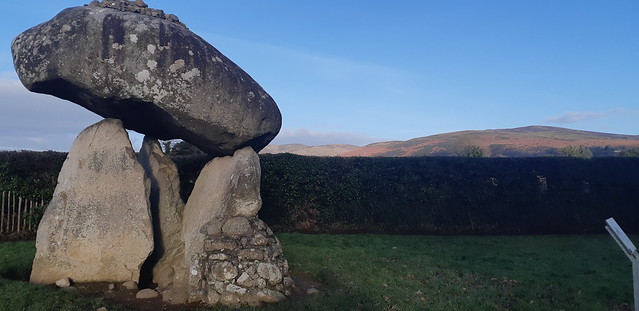 In part 1, I took you around the Proleek Wedge tomb and told of the Irish legend that surrounds it.
In part 1, I took you around the Proleek Wedge tomb and told of the Irish legend that surrounds it. A short walk away on the same golf course is what is quite possibly Ireland’s most photographed dolmen. A dolmen is a type of single-chamber megalithic tomb, usually consisting of two or more vertical megaliths supporting a large flat horizontal capstone or “table” in a “tripod” type style. This one is named the Proleek Dolmen. Irish linguists suggest that Proleek means “the Death Stones,” or the “Dinner Stones.
You may wonder why there are so many small stones on top of this monument. Well, an interesting bit of folklore here says that if you are successful in tossing three consecutive pebbles up to the top of the capstone, without any rolling off, you will get a wish. Another version of the legend states that whoever manages the feat will be married within the year.
The Proleek Dolmen is a north-west facing structure which dates from c. 3000 BCE stands at around 3.5 metres (over 13 feet tall), this huge megalith has a capstone 3.8 metres (12.5 feet) in length and weighing at least 40 tons! That’s one impressive balancing act!@phoenixrosedsgn part 2 #Megalithic #monuments Proleek #Dolmen near #Dundalk #Ireland #Legend #History #tomb #discoverIreland #exploreIreland #travel #tourism #irl ♬ Fantastic sad music background music(842811) – COLOR MUSICA
The dolmen has been aligned so that it’s opening points toward the peak at Sleive Guillon so it can take advantage of the setting sun of the summer solstice. (Of course, it’s January and almost sunset so the sun is on the wrong side…but it’s stunning nonetheless).
P.S. I want to rename it the 3 sisters who hold up the moon… what do you think?




